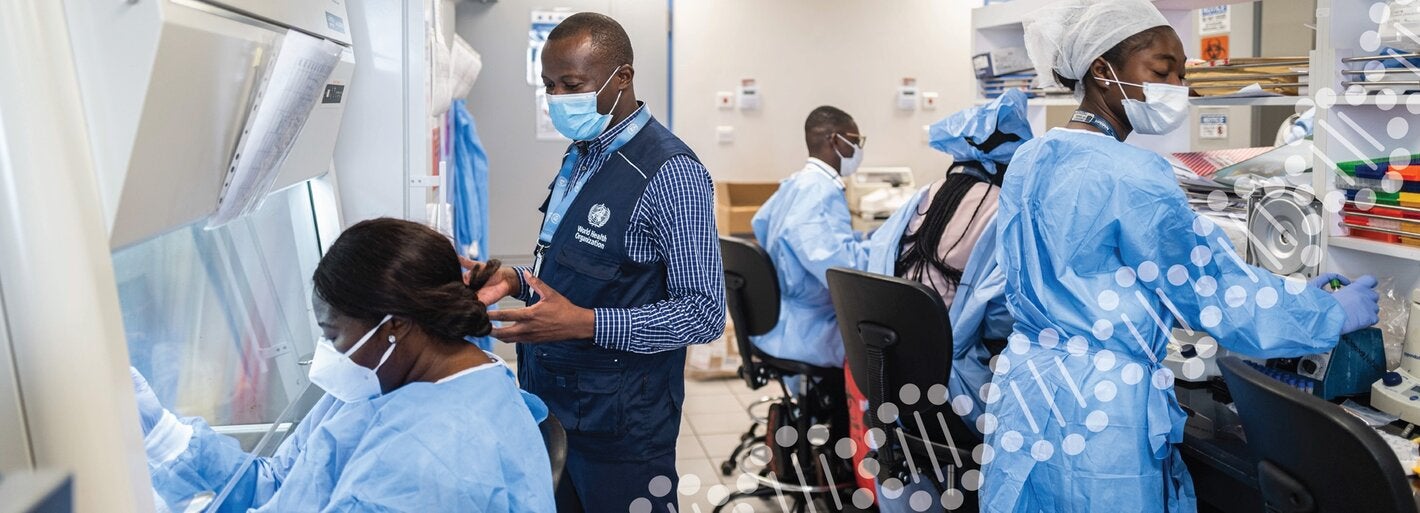
PAHO regional network forms part of worldwide effort to track pathogens
Washington, D.C., 31 March 2022 (PAHO) – The World Health Organization (WHO) released a strategy this week to strengthen genomic surveillance around the world. The Pan American Health Organization (PAHO) COVID-19 Genomic Surveillance Regional Network, created at the start of the pandemic in 2020, is part of this new strategy to track diseases in the Americas.
The Global genomic surveillance strategy for pathogens with pandemic and epidemic potential 2022–2032 is not specific to a single pathogen or disease threat. It provides a high-level unifying framework to leverage existing capacities, address barriers and strengthen the use of these tools worldwide.
The COVID-19 pandemic showed that health systems need genomic surveillance so that risks are rapidly detected and addressed. This technology has been critical in the response, from the identification of a novel coronavirus to the development of the first diagnostic tests and vaccines, to the tracking and identification of new virus variants.
Data collected by WHO show that in March 2021, 54% of countries had this capacity. By January 2022, thanks to the major investments made during the COVID-19 pandemic, the number had increased to 68%. Even greater gains were made in the public sharing of sequence data: in January 2022, 43% more countries published their sequence data compared to a year before.
In the Americas, 307,407 SARS-Cov-2 virus sequences have been processed so far through the PAHO regional network, which includes laboratories from 26 countries. Eight Regional Sequencing Laboratories in Brazil, Chile, Mexico, Colombia, Costa Rica, Panama, Trinidad and Tobago and the United States provide support to countries with limited sequencing capacities and help countries to share genetic information with global databases.
PAHO tracks the SARS-CoV-2 variants of concern by country and subregion and publishes the data in a dashboard to follow where variants are appearing and circulating. PAHO has provided support including training and critical material to the national laboratories to help them ramp up sequencing capacities.
“Routine SARS-CoV-2 genomic sequencing is a strategy to increase the amount of data available to the global community,” said Dr. Jairo Mendez Rico, PAHO’s regional advisor for viral diseases. This helps in developing diagnostic protocols, provides information for vaccine development, and lets us understand the evolution and molecular epidemiology of the virus, he added.
Various public health programs – from Ebola to cholera – use genomic surveillance to understand a pathogen at its molecular level, but COVID-19 has highlighted the challenges of bringing genomics to scale.
“The complexities of genomics and the challenges of sustaining capacities in different settings, including workforce needs, means that most countries cannot develop these capabilities on their own. The global strategy helps keep our eyes on the horizon and provides a unifying framework for action. WHO looks forward to working with countries and partners in this important and highly dynamic field,” said Dr Tedros Adhanom Ghebreyesus, WHO Director-General.
“Genomic surveillance is critical for stronger pandemic and epidemic preparedness and response,” said Dr Michael Ryan, Executive Director, WHO Health Emergencies Programme. “This pandemic has laid bare the fact that we live in an interconnected world and that we are only as strong as our weakest link. Improving global disease surveillance means improving local disease surveillance. That is where we need to act, and this strategy will provide us with the foundation.”



